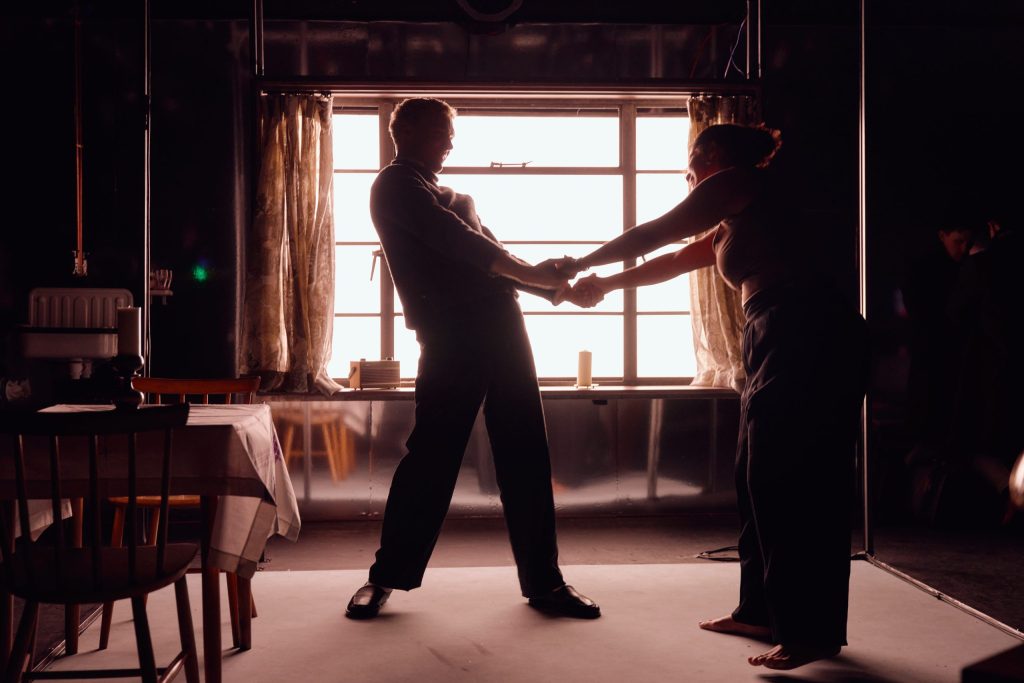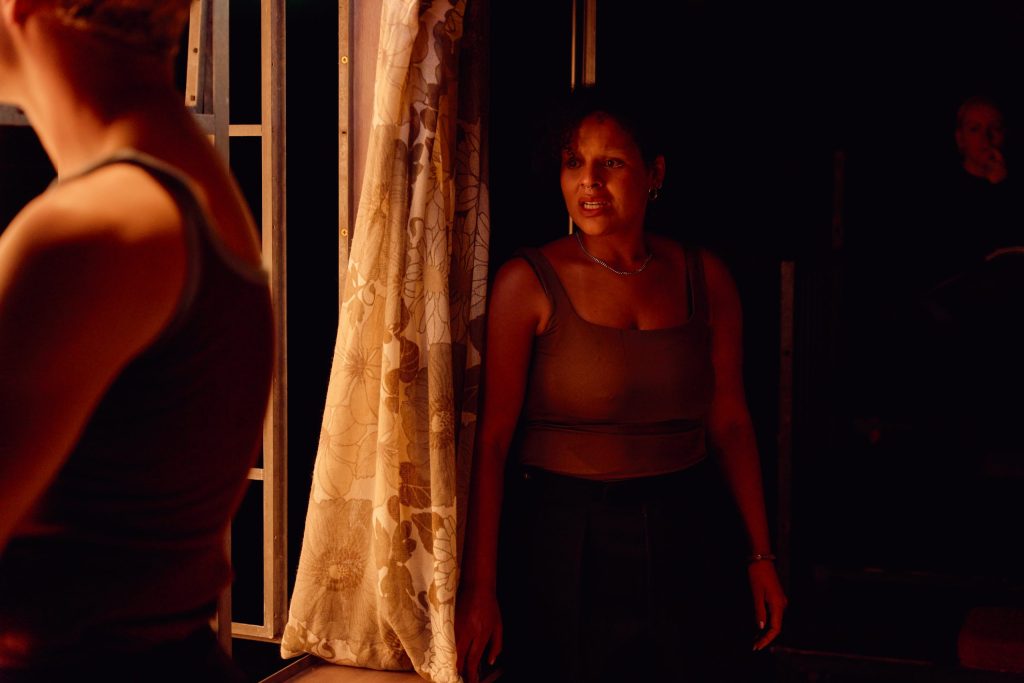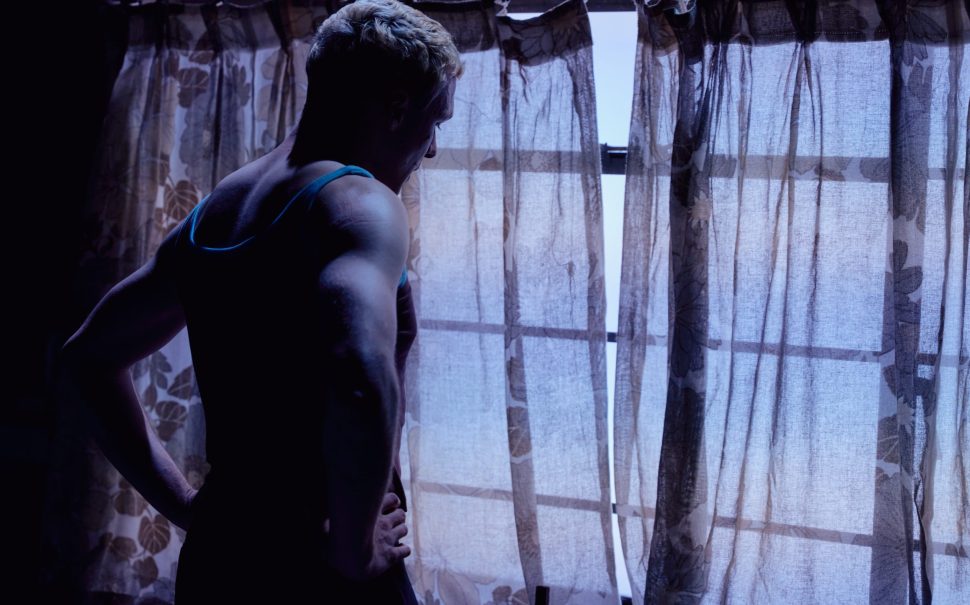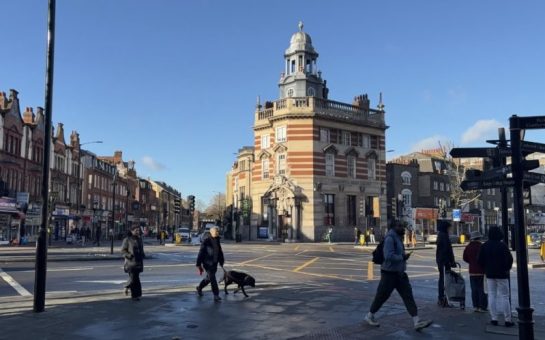Nancy Netherwood’s Radiant Boy unfolds in 1983 north east England where faith, identity and fear clash under the shadow of political upheaval.
Thatcher’s second term looms, AIDS is on the brink of national awareness and the miners’ strike is just a year away.
“It’s a moment,” Netherwood tells me, “especially for someone who is queer and from the industrial north east to be very like scared of their future.”
Russell (Stuart Thompson), a student fleeing a mysterious spiritual torment, returns to his mother’s home. Haunted by a spectral Voice (Renée Lamb), he’s caught between internal crisis and external judgment. His brittle mother Maud (Wendy Nottingham) calls in Father Miller (Ben Allen), a weary priest who practices “psycho-divinity”; essentially an exorcism with therapeutic overtones.
But Radiant Boy is no simple horror story. It’s a haunting blend of queer coming-of-age, supernatural ambiguity, and psychological reckoning. Netherwood uses genre not for spectacle but emotional clarity.
She told me: “I’ve always been really interested in horror and sci-fi and fantasy, but finding ways to tell more grounded stories.
“Sometimes a story really hits you hardest when it’s told through something unexpected…horror lets you feel it, rather than just intellectualise it.”
Indeed, the show’s horror is rooted less in demons and more in the ache of not being understood; by your family, your faith, or even yourself. The Voice haunting Russell may represent queerness, trauma, or something far more unknowable.
Netherwood leaves space for ambiguity: “I quite like that it’s not 100% spelled out, as it gives the audience permission to bring their own experiences.”

Stuart Thompson as Russell struggles with the haunting presence of Renée Lamb’s spectral Voice.(Photo credit: Olivia Spencer.)
The production leans on minimalist power. Tomas Palmer’s set creates a domestic space on the edge of collapse. Light and shadow constantly reshape the emotional tone. Director Júlia Levai avoids melodrama in favour of quiet intensity, building slow, ritualistic tension.
The performances are uniformly strong. Thompson is magnetic as Russell, moving from fear to fury with precision. Nottingham’s Maud balances detachment and desperation, while Allen brings a layered ambiguity to the priest. Lamb weaves folk hymns and new wave melodies throughout the show with unsettling ease.
Music is a central force in the piece. Set in the early 1980s, it draws on the emotional texture of new wave – The Cure, Depeche Mode, New Order – alongside traditional north east folk. “The new wave tracks are more external,” Netherwood explains. “The folk songs are more internal – the music of where he’s from.”
With Eleanor Peregrine as musical coordinator, these opposing sound worlds become a “dynamic musical language of two forces,” representing Russell’s split between past and future, home, and escape.
Radiant Boy doesn’t offer immediate answers. By the final scene, resolution feels deliberately out of reach. What we’re left with is something more potent: a boy trying to name the thing inside him, in a world that doesn’t want to hear it. Quietly devastating and profoundly moving, Radiant Boy is a rare achievement.
Nancy Netherwood’s Radiant Boy runs at Southwark Playhouse until June 14, 2025.

Photo credit: Olivia Spencer.





Join the discussion